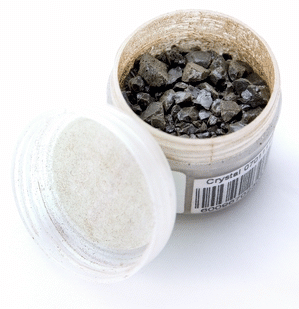| The Packing Analysis studies the powder’s ability to pack or settle after being exposed vibrational energy during transportation and storage.
The following are some process examples where packing and settling are important: a container that must be filled with the same amount of powder each and every time but settles to a different amount during transportation and storage or a powder that packs into a strong cake during handling and storage. An ideal powder has properties that do not change during processing, handling and storage. |
 |
Any device used to test the changes in volumetric expansion and compression must take the application problems and processing conditions into account to supply relevant data to the user. The powder in the test device must be in the same state as it is in the process being studied. This ensures that the packing analysis will be applicable to the problem.
The REVOLUTION Packing Test has three process steps: Preparation, Vibration and Analysis.
|
Sample Preparation The sample powder is rotated at a chosen rotation rate and length of time to completely aerate the material. This step will allow the user establish a repeatable initial powder state before beginning the packing analysis. After the initial preparation, the RPA measures the powder volume. |
Preparation |
Vibration
The motor in the REVOLUTION Powder Analyzer vibrates the powder for a period of time at a specified amplitude and frequency. The sample volume is monitored during the vibration and the final volume is recorded as the volume after vibration. The percentage change in volume from after prep and after vibration indicates the sample’s ability to pack during storage and transportation.
|
Vibration |
Volume during Vibration |
|
Analysis After the volume measurement, the powder is rotated at a specified speed until the compacted powder breaks (or avalanches). The software calculates the force required to break the powder mass. |
Analysis |
|
Sample with higher break force |
Sample with lower break force |


